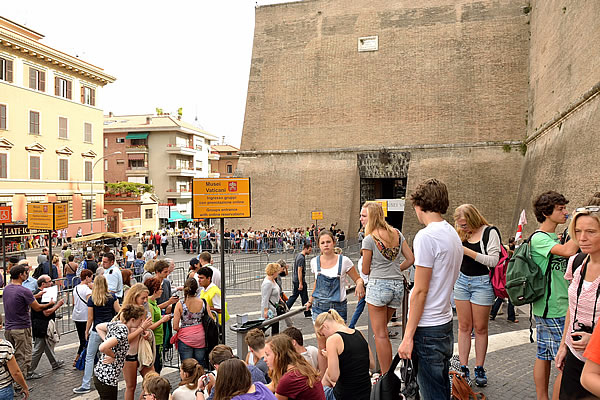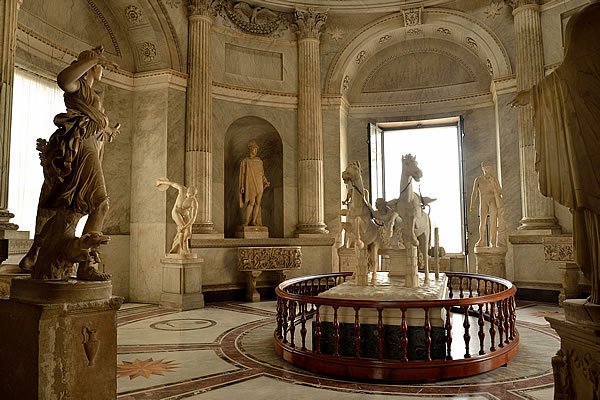English | Dutch |
|
| A visit to the Vatican Museum | |
Assisi (Italy), October 15th 2014
|
|
| |
|
It is half past seven in the morning, when the alarm clock goes off in our tent at the campsite is the western part of Rome. We get dressed, eat our breakfast and walk to the bus stop just outside the campsite to take the bus and then the metro to Rome’s city centre. Today is a special day. We are going to visit the Vatican Museum, undoubtedly one of the most spectacular museums of our globe, including works by Italian masters Michelangelo, Raphael and Caravaggio. We are absolutely not art buffs, but the chance to see for example Michelangelo's "Genesis; the Creation" and the "Last Judgment" in the Sistine Chapel is something we are not wanting to miss. At a quarter to eight we join the queue in front of the ticket counter of the museum. Ticket sales starts at nine o'clock, but we are extra early to be one of the first in line. But we are definitely not the first. There are already about fifty people waiting, and at half past eight the line had grown to about 150 meters with more than five hundred people!
|
|
 |
|
Ivonne and the rest of the crowds |
|
At half past eight, the museum opens for the people who have made an advance internet reservations. These are mainly the tour groups arriving by bus and for whom there is a special line. At nine o'clock the ticket sales begin. For sixteen Euro per person we are allowed to get in and if we also passed the security checks, we enter the museum. It is already quite busy due to the tour groups. We decide to walk the halls that we find most important to see. And that is primarily the Sistine Chapel. This fabulous chapel was built in 1484 by Pope Sixtus IV, after who the chapel was named. But it was Pope Julius II in 1508 who asked Michelangelo to decorate the chapel. However, Michelangelo refused at first because he saw himself more as a sculptor than as a painter. Eventually, the Pope persuaded him to take the project, after which Michelangelo began the murals which became one of the most famous artworks in the world. His works “Genesis; the Creation" on the ceiling of the Sistine Chapel and his "Last Judgment" on one of the walls, are truly magnificent, and a must see even if you're not a true art lover.
| |
 |
|
One of Raphael's most famous works: La Scuola d'Atene |
|
The Vatican Museum covers many rooms in different buildings of the Vatican. It is not easy to find your way through the museum, even with the confusing map that you get with your tickets. The halls of the museum are connected by long corridors, which also include works of art, but serve mainly as traffic arteries to stow the large numbers of visitors The Vatican Museums are visited each year by about 4.5 million visitors; and that mean more than 20,000 people on a busier day! When we leave the Sistine Chapel, we notice that it has become much busier. With appropriate urgency we rush to the Pinacoteca part of the museum where we admire the last work of Caravaggio: “La Trasfigurazione”. This part of the museum also contains religious masterpieces of other masters, including Bellini and Leonardo da Vinci.
|
|
 |
|
Crowds at the entrance of the Vatican Museum |
|
 |
|
We posing in the St Peter's Cathedral |
|
 |
|
Raphael's last work: La Trasfigurazione |
|
 |
|
Extreme wealth in La Sala Immacolata |
|
 |
|
One of the many rooms in the Vatican Museum |
|